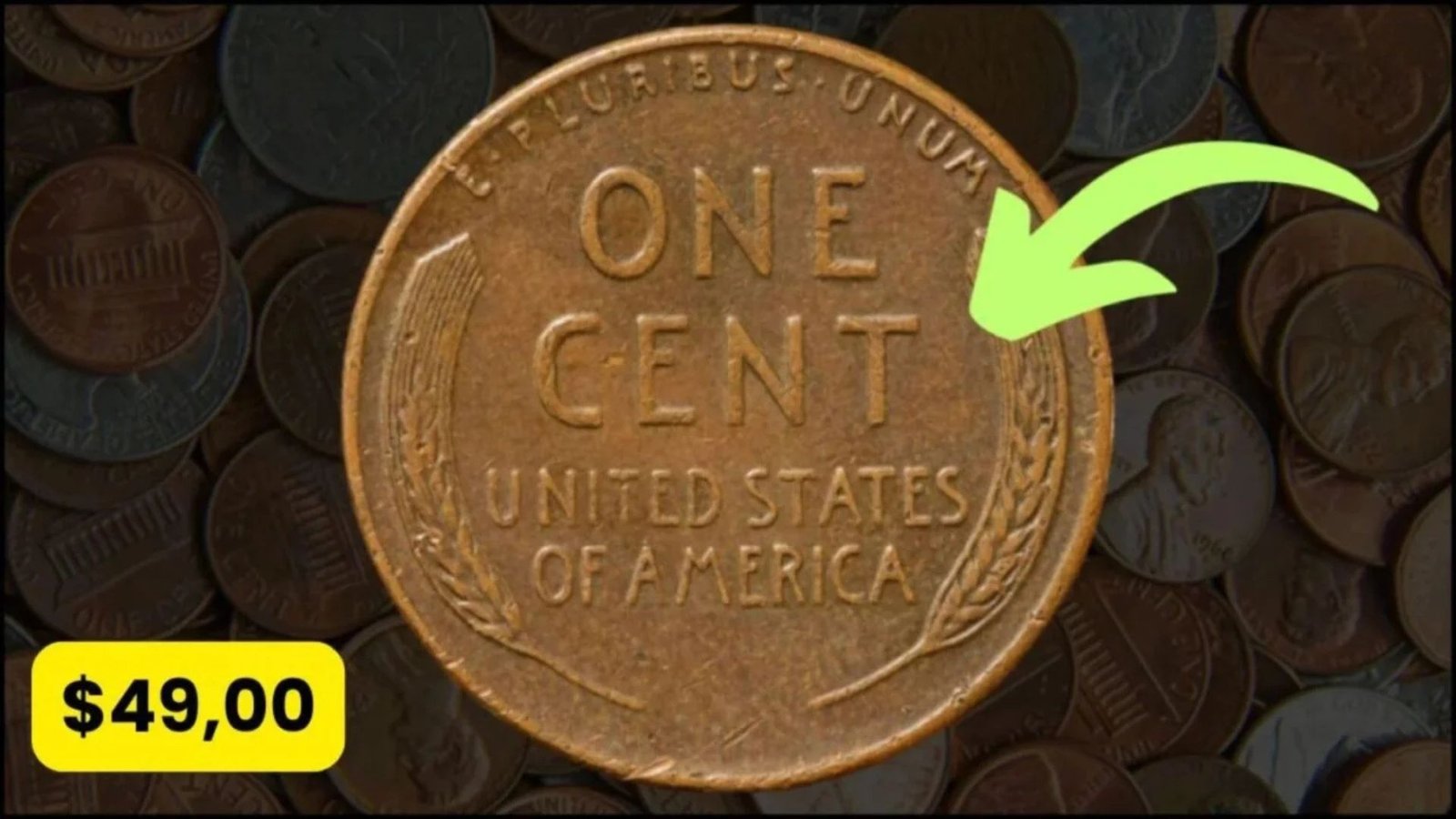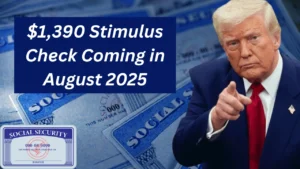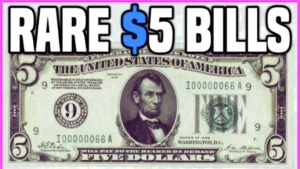Are you someone who tosses pennies into a jar without a second thought? What if one of those tiny coins could be worth a whopping $49,000? The Lincoln Wheat Penny, an old American one-cent coin, has some super rare types that collectors pay big bucks for. In particular, the 1914-D version stands out as a gem that might still be floating around in everyday money.
This article dives into its background, what makes it so pricey, how to recognize it, and tips on hunting for one. If you’re curious about coin collecting or just love a good treasure story, keep reading to learn more about this exciting piece of history.
We’ll break it down in easy-to-understand words, explaining any tricky terms along the way. For example, “mintage” simply means how many coins were made in a certain year, like the production count.
The Story of the Lincoln Wheat Penny
The Lincoln Wheat Penny is more than just old money – it’s a snapshot of American history. First introduced in 1909, it honored Abraham Lincoln’s 100th birthday. Lincoln was the 16th president of the United States, famous for guiding the nation through the Civil War and ending slavery.
Before this penny, U.S. coins usually showed imaginary figures like Lady Liberty. This was the first time a real person appeared on a regular coin, making it a big deal back then.
Who Created It and What Does the Design Mean?
The penny was designed by Victor David Brenner, an artist who came to America from Lithuania. On the front side (called the obverse – that’s the “heads” part), you’ll see Lincoln’s profile. The back side (the reverse, or “tails”) features two stalks of wheat curving around the words “ONE CENT.” The wheat symbols represent America’s farming strength and abundance.
This design stayed the same until 1958, when it was updated to show the Lincoln Memorial building. Over the years, billions of these pennies were made, but only a few special ones are worth a fortune today.
What Makes the 1914-D Lincoln Wheat Penny Worth So Much?
Most Lincoln Wheat Pennies are only worth a penny or a bit more. But the 1914-D is different because there aren’t many left, and people really want them. “D” stands for Denver, the city where this batch was produced at a government coin factory (known as a mint).
Few Were Made, and History Played a Role
In 1914, the Denver mint only produced about 1.2 million of these pennies. That’s a tiny number compared to other years, when hundreds of millions rolled out. This happened just before World War I started, a time when coins were heavily used and many got damaged or lost over time.
In the world of coin collecting (which experts call numismatics – basically, the hobby of studying and gathering coins), rarity is key. The fewer there are, the higher the price climbs.
How the Coin’s Condition Affects Its Price
The worth of a 1914-D penny depends a lot on its shape. Coins get graded on a scale from 1 to 70, where 1 is super worn out and 70 is flawless like it just came from the factory. Better condition means more money.
Here’s a simple table showing estimated values based on condition:
| Condition Level | What It Looks Like | Approximate Value |
|---|---|---|
| Good (Worn Out) | Scratches everywhere, details hard to see | $200 to $500 |
| Fine (Some Wear) | Details show but look dull | $1,000 to $3,000 |
| Extremely Fine (Light Wear) | Sharp features with minor marks | $10,000 to $15,000 |
| Mint State (Like New) | Shiny, no wear, original copper color | Up to $49,000 or more |
If it’s in “mint state,” it often has a bright red-copper glow that collectors adore.
Tips to Spot a Real 1914-D Lincoln Wheat Penny
Want to check if you have one? It’s not too complicated, but you need to be careful because fake versions are out there.
Main Things to Look For
- The Date: Make sure it says “1914” clearly on the front.
- Mint Mark: There’s a small “D” right under the date, showing it was made in Denver.
- Back Design: Two wheat stalks frame “ONE CENT” on the reverse.
- Material and Color: It’s copper, so it should have a reddish-brown tone.
Grab a magnifying glass to inspect the fine lines – they should be crisp and clear on a genuine coin.
Watch Out for Fakes
Scammers sometimes alter common pennies, like turning a 1944-D into a fake 1914-D. To avoid getting tricked, have it checked by pros from groups like PCGS or NGC. These are reliable services that grade coins and verify if they’re real.
Here are some quick tips in bullet points to stay safe:
- Buy from trusted sellers or auctions.
- Compare with pictures of known real ones online.
- Avoid deals that seem too good to be true.
- Learn about common fake signs, like blurry edges or wrong weight.
Is This Valuable Penny Still Out There in Everyday Use?
Absolutely, there’s a chance! While most high-value 1914-D pennies are safely stored in collections, some could still be in circulation. They might pop up in loose change, old coin rolls from banks, or even at yard sales. Since these pennies were used for decades, a few forgotten ones might be hiding in grandma’s attic or a forgotten piggy bank.
Coin enthusiasts often “roll hunt” – they get rolls of pennies from the bank and sift through them for rarities. It’s a thrilling hobby that’s low-cost and full of surprises. Though the odds are slim (like finding a needle in a haystack), stories of people discovering valuable coins keep the excitement alive.
Conclusion: Start Your Treasure Hunt Today
The 1914-D Lincoln Wheat Penny proves that everyday items can hold hidden value. From its historical roots honoring Abraham Lincoln to its rarity boosting prices up to $49,000, this coin is a fascinating part of U.S. heritage. While stumbling upon one in your pocket is rare, the fun of searching makes it worthwhile.
Whether you’re a beginner or seasoned collector, grab a magnifying glass and start checking your change – you never know what you might find. Remember, knowledge is your best tool in the world of coins. Happy hunting!
FAQ
What is a Lincoln Wheat Penny?
It’s a one-cent coin made from 1909 to 1958, featuring Abraham Lincoln on the front and wheat stalks on the back.
How much is a regular Lincoln Wheat Penny worth?
Most are worth just 1 to 5 cents, but rare ones like the 1914-D can reach $49,000 in great condition.
Where can I find a 1914-D penny?
Check pocket change, bank rolls, estate sales, or online auctions. But authentic ones are hard to come by.
How do I know if my penny is fake?
Look for sharp details, correct mint mark, and get it appraised by experts like PCGS.
Why are some pennies so valuable?
Rarity (low production numbers), good condition, and collector demand drive up the price.





1 thought on “The Lincoln Wheat Penny Valued at $49,00, Still in Circulation?”